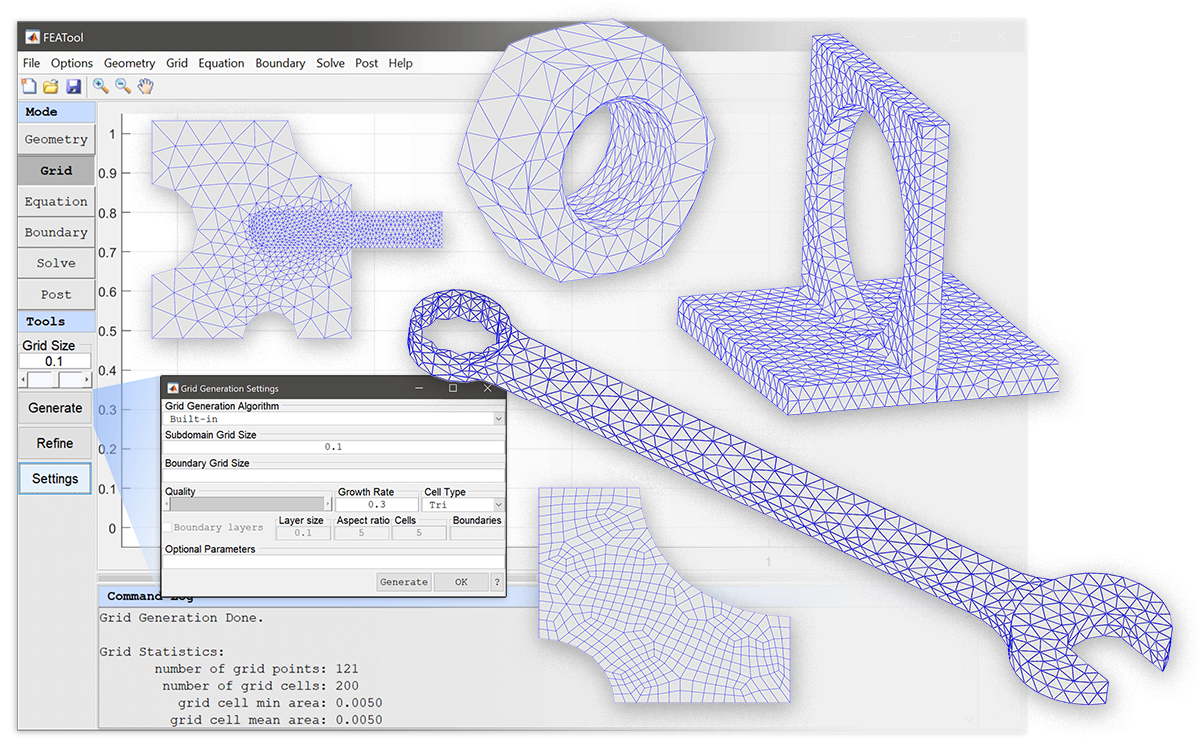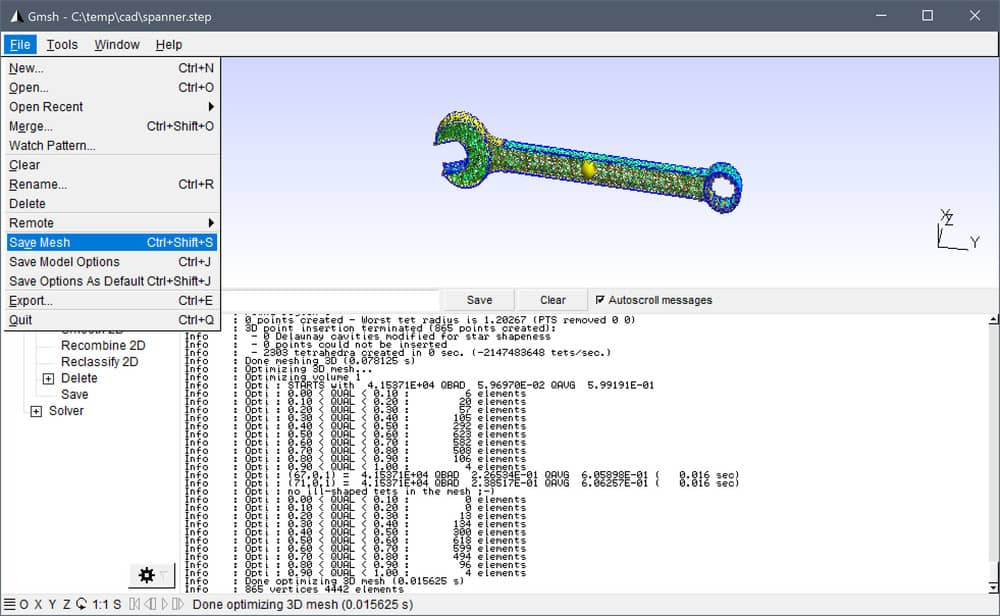

If the subsequent operations involve the grid data structure, you need to understand that the Gmsh grid is stored in the corresponding entities. Generally directly under the first-level namespace, functions related to geometry are often in modelUnder the namespace, functions related to meshing are usually in meshUnder the namespace. Global functions, such as open、merge、writeEtc. You can basically understand the commonly used functions by viewing the official sample files. The way to use Gmsh API is relatively simple. # include # include int main ( int argc, char * *argv ) to sum up In this first extended tutorial, we start by using the API to access basic // geometrical and mesh data. These // additional features are introduced gradually in the extended tutorials, // starting with `x1.cpp'. - // // Gmsh C++ extended tutorial 1 // // Geometry and mesh data // // - // The C++ API allows to do much more than what can be done in. Need to add -lgmsh option when compiling to include dynamic link library.
#Gmsh 3d mesh tutorial code
The code is slightly modified on the basis of x1.cpp of the official tutorial, and Chinese comments are added to some parts that require attention. The following takes the C++ version as an example. When using the Gmsh API, you only need to import the corresponding library.
#Gmsh 3d mesh tutorial generator
The grid generator and solver are connected to form an overall framework. Today, I will introduce the third way to use Gmsh: use Gmsh API to integrate it into other software.

extrude+rotate the 2D slice, together with the mesh. Note that if your whole geometry is rotation-invariant, you should probably just I've clarified the doc and added a rotation example in > To tell gmsh that gthe mesh on the left periodic surface, master, is going to be rotated by an angle 2*Pi/N to make the mesh on the other slave periodic surface. > I just cannot succeed to find the correct syntax to the statement > The geometry is imported through a step file and all I have to force is to make gmsh generate a rotationally periodic mesh on the periodic surfaces. > To make it visually clear, if N=1, left periodic surface would be close on itself and the rotation angle would be 2*Pi. The rotation angle is 2*Pi/N where N is the number of slices. > I need to make a triangular cake slice shaped 3d solid mesh using gmsh 3.0.6 where the 2nd side is the rotational periodic surface of the first side surface of the mesh. > I just needed to better explain my previous question:
#Gmsh 3d mesh tutorial how to


 0 kommentar(er)
0 kommentar(er)
